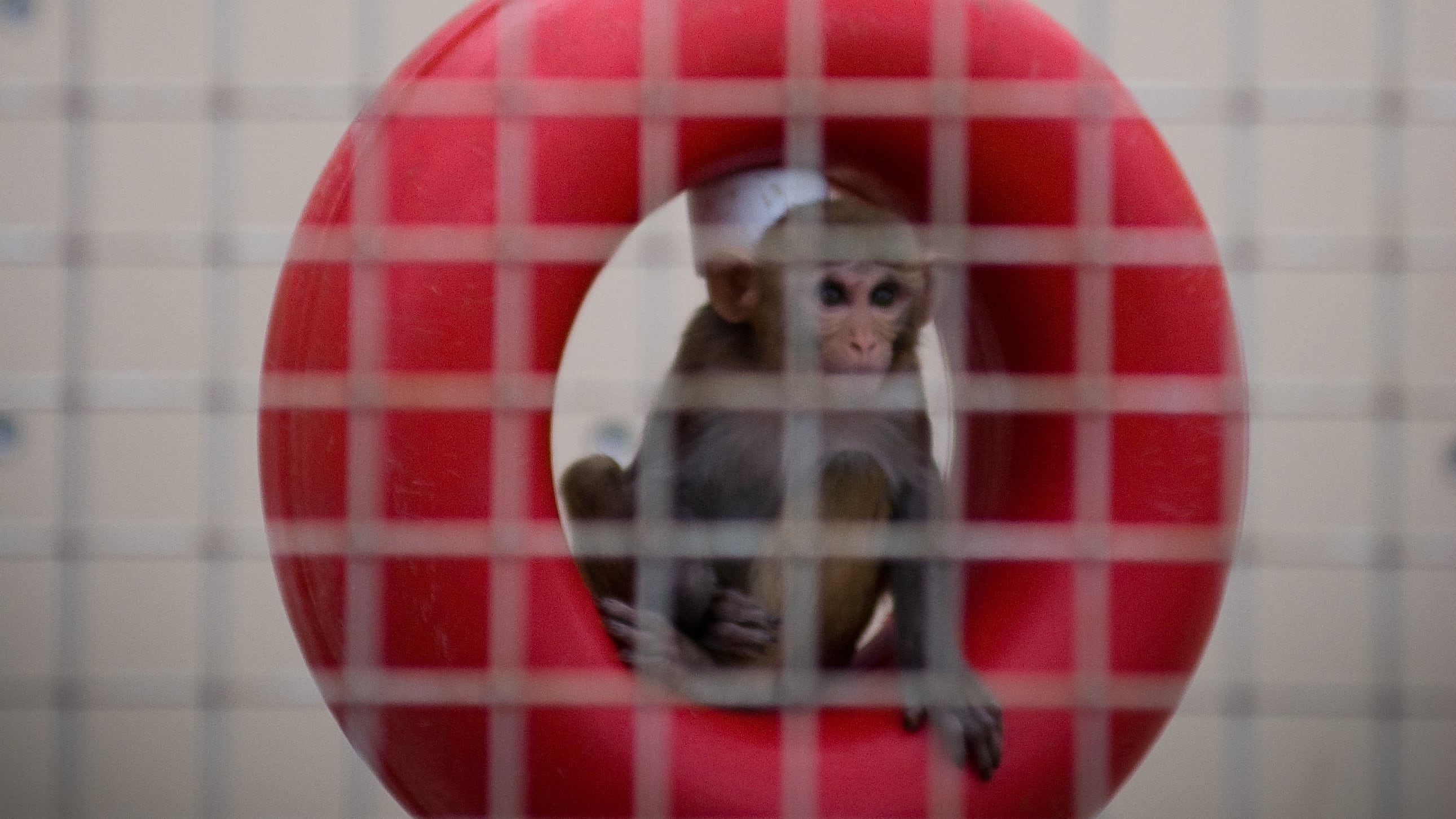Pressure on Oregon Health & Science University to shutter the Oregon National Primate Research Center increased this week when three state representatives seeking its closure wrote to a group of citizens reviewing OHSU’s purchase of Legacy Health.
The representatives asked members of the community review board, or CRB, a volunteer group appointed by the Oregon Health Authority, to consider a slew of comments from the public urging OHSU to close the primate center as a prerequisite for approving the Legacy purchase.
The comments, posted on OHA’s website, echo recent radio and television ads by the Physicians Committee for Responsible Medicine, a medical ethics group, describing inhumane conditions at the center.
“Comments submitted to the CRB have raised serious questions about experiments involving high alcohol dosing, drug administration to pregnant monkeys, and reproductive procedures that many believe have little relevance to improving human health,“ the representatives, led by David Gomberg (D-Otis), wrote to the review board March 23. ”These are not abstract critiques. They are grounded in ethical and financial concerns about the use of public resources.“
The letter was co-signed by Reps. Farrah Chaichi (D-Beaverton) and Courtney Neron (D-Wilsonville). Gomberg sponsored a bill in 2023 that requires OHSU to publish annual reports on the number of primates at the center and how many were born, bought, sold or used for research.
Health Care Market Oversight, a group within the Oregon Health Authority, has the power to appoint a temporary community review board to examine health care mergers if it deems one necessary. The boards help OHA understand how the proposed transaction would affect Oregonians and recommend whether a deal should be approved. The boards have no decision-making authority.
On Thursday, four days after Gomberg and the others wrote to the review board, Peter Barr-Gillespie, head of research at OHSU, held a meeting at the primate center to tell employees that Gov. Tina Kotek was pressuring university leaders to close the facility because of public outcry.
Pressure to close the center comes at a difficult time for OHSU. State regulators are scrutinizing its purchase of Legacy to determine if it should go forward, and the Trump administration is trying to cut funding to the National Institutes of Health, which supplies about $300 million a year in grants to OHSU, including $56 million for the primate center.
In conjunction with the meeting, Barr-Gillespie wrote yesterday to OHSU staffers at its West Campus in Beaverton, where the primate center is located, to tell them what closure would mean.
“At last count, there were 561 employees on the West Campus, including 73 faculty, 38 postdocs and students, 187 members of the Research Workers Union, 181 members of AFSCME 328, and 82 unclassified administrative staff,” Barr-Gillespie wrote. “The impact of the ONPRC closure on these individuals’ careers and livelihoods would be profound.”
Closing the center would cost $100 million, Barr-Gillespie wrote.
“Absorbing these costs would be devastating for OHSU finances and would significantly impact our ability to carry out our health care, education and research missions, especially when we are facing uncertainty and challenges with the health care financial model, while we observe the Department of Education’s dissolution, and while we weather changes to NIH’s funding priorities,” Barr-Gillespie wrote.
It costs OHSU about $60 million a year to run the primate center.
Dr. Neal Barnard, president of the Physicians Committee for Responsible Medicine, said his group began running ads in the first week of March. Beyond the cruelty to animals, Barnard says he doesn’t understand why OHSU, already strapped for cash, would continue to sink money into a center that does outmoded research and draws so much public ire.
“This is not an asset,“ Barnard said. ”This is a liability.”
The work done at the U.S.’s seven National Primate Research Centers is unnecessary now that more modern methods have been developed, Barnard said in an interview. He says he served on an NIH strategic planning panel in 2017, where he met a researcher from one the centers who kept saying, “We’ve got the monkeys, give us something to do.”
Opponents of animal studies often point out that Harvard University closed its primate center in 2015, showing that it can be done.
In his letter to staff, Barr-Gillespie said OHSU’s center is different. First, it’s much larger, housing almost 5,000 animals, compared with 1,700 at Harvard, and it has three times as many employees.
“Additionally, the West Campus, with its approximately 35 buildings, has a much more complex infrastructure,” Barr-Gillespie wrote. “OHSU has significant financial obligations to the federal government, including claim to a portion of any revenue received from the sale of the property.”
